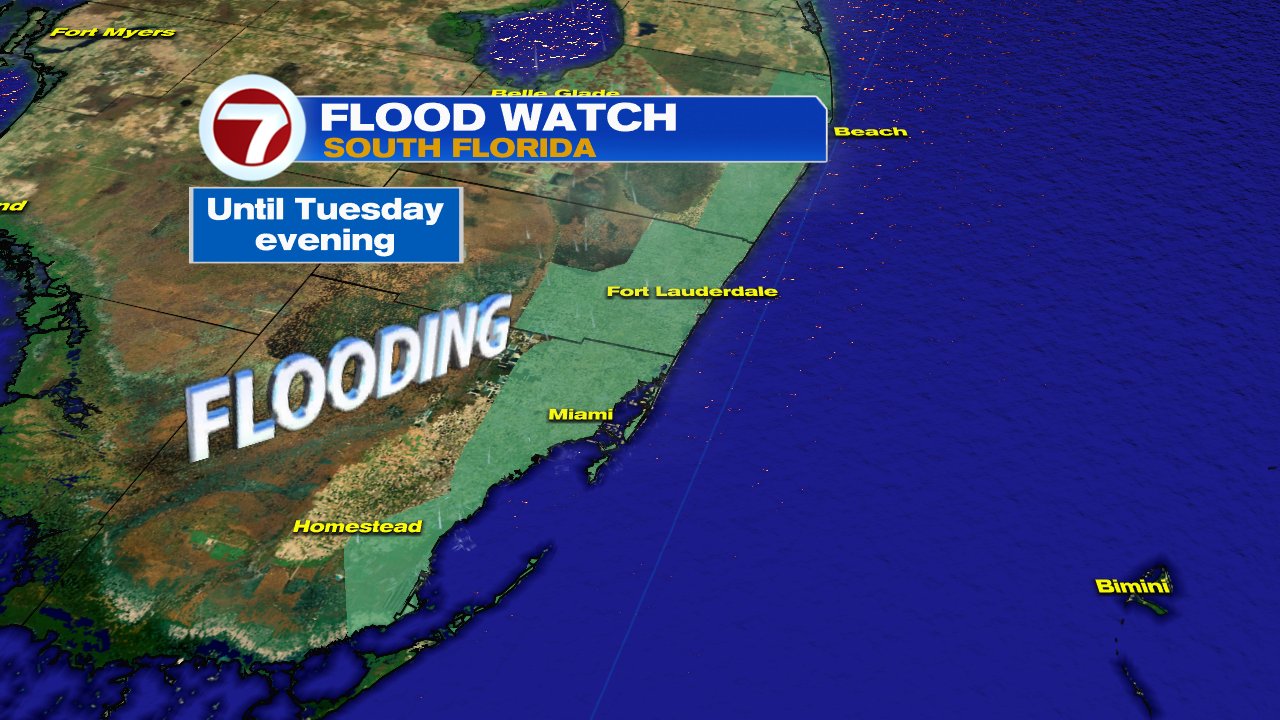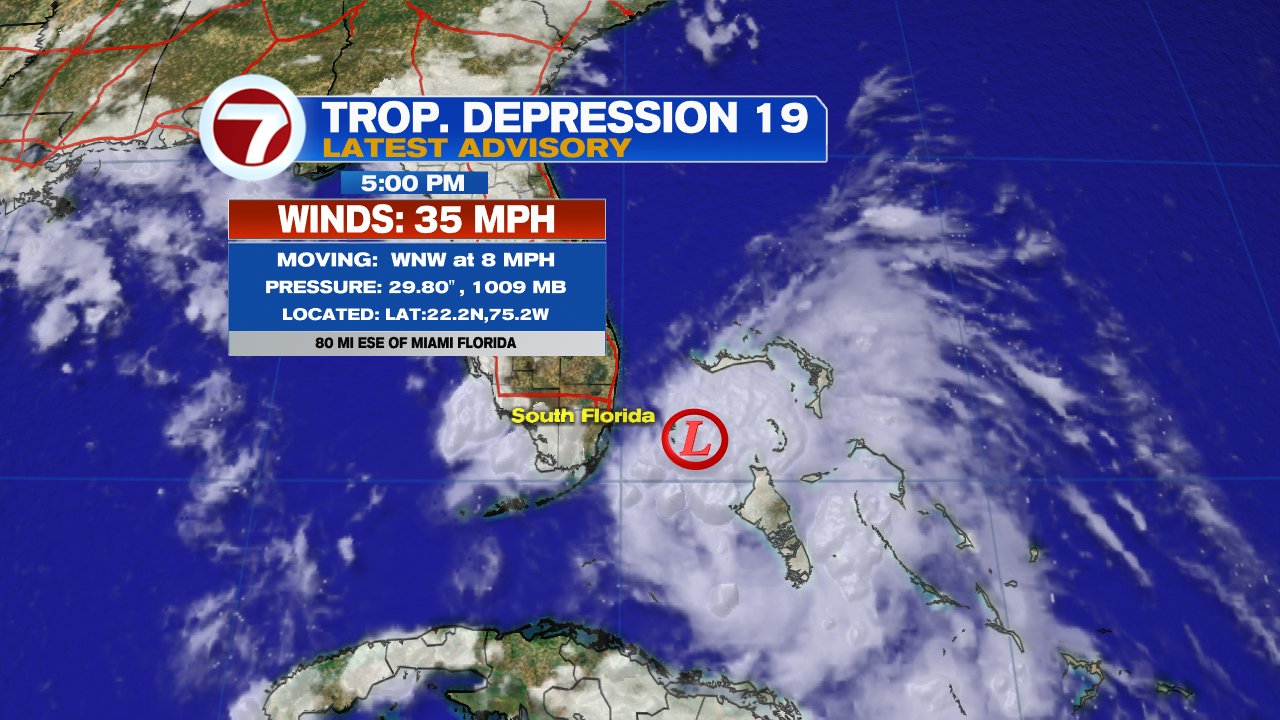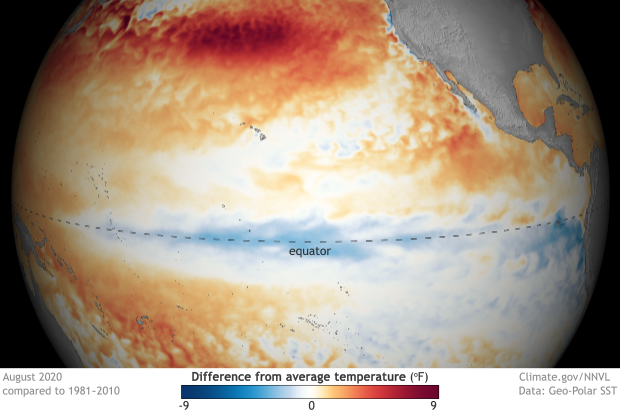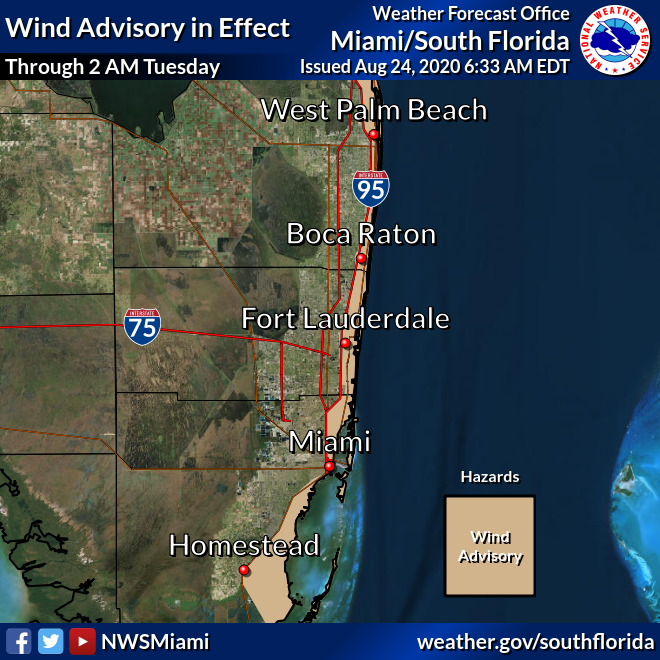Friday brings us a healthy disturbance over the Northwestern Bahamas. It is being watched by he National Hurricane Center (NHC) and is forecast to cause pockets of heavy rain across the region. It could become a depression as early as tonight
Satellite Loop
This is Invest96L. Invest for an area NHC is INVEST-igating, 96 is a tracking number, "L" stands for Atlantic Basin. It could become a depression near South Florida Friday Night.
- Location: Over Northwestern Bahamas 25.0 N 78.0 W
- Winds: Gusts at times to 30 mph
- Pressure: 1013 mb / 29.91 inches
- Moving: West at 10 mph
The darker oranges, browns, and even black colors in this loop will show you where the highest cloud tops can be found, which correlate to heavy rain. 96L appears to have plenty of moisture which will be impacting the Bahamas Friday. Some of the rain should start creeping into South Florida by late afternoon and stay over the area possibly throughout the weekend. Saturday could be a wet day with possible street flooding over areas saturated from recent rain.
NHC Watching 6 Areas
This is a great view of five out of the six systems NHC is following.
- Small bit of clouds just west of Florida is a disturbance
- Big blob of clouds over the Bahamas is Invest96L
- Swirl in Mid Atlantic is Paulette
- Smaller spin SE of Paulette is Rene
- Big mass of clouds off Africa is Invest95L.
- Not seen from this angle is a new wave over Western Africa.
Chances for development of 96L:
Look at the orange"X" by the Bahamas. NHC says the disturbance has an 80% chance for organization. Surface observations suggest it could become a depression late Friday. If it doesn't, it should once it moves into orange area in gulf of Mexico. An area of low pressure could be forming already.
Where is it headed?
Early model runs suggest a track that may take it as far East as Florida's Big Bend and as far west as Eastern Texas. This entire region should monitor it closely.
Live Radar
Stay on top of the downpours with LIVE radar from NWS Miami.
Another Disturbance near Florida
On this satellite view, the disturbance is not the big blob of clouds over Texas, but the small strip just south of Mississippi & Alabama. Per the potential formation graphic earlier in this post, it has a 30% chance for development as it drifts SW into the yellow area away from Florida.
2 Tropical Storms
Paulette
Paulette should intensify into a hurricane this weekend and unfortunately aim for Bermuda before making a sharp turn back out to sea. This turn will be due to the jet stream and a high pressure dome coming out of the U.S. We hope this duo speeds up to offer Bermuda some protection.
Rene
Rene will get lost in the steering winds the next few days. It is battling shear and moving over the same territory Paulette traversed. This water is spent of its fuel, not as warm, and thus provides no energy to Rene.
Where to Next?
If it survives the weekend, it will eventually start moving north again being dragged by the same jet that pushed Paulette Away.
Invest 95L
If you refer to the potential formation graphic at the start of the blog, you will see a big red swath in the Eastern Atlantic. This is where 95L is expected to develop. It has a high chance, 90%... that it will become the next named system
- Location: A couple of hundred miles South of Cape Verde 11.0 N 25.0 W
- Winds: Gusts at times to 30 mph
- Pressure: 1011 mb / 29.85inches
- Moving: West at 15 - 20 mph
Where is it headed?
When you see a model spread like this, it means they are having a tough time with 95L. Some runs take it towards the islands, while other move it quickly to the north Atlantic. Lets see what actually develops and where, so the models can get a better handle. This is so far away, there is plenty of time to watch.
Lastly, a wave over the West Coast of Africa.
It is just starting to emerge over the Eastern Atlantic. Once in the orange area by Cape Verde, as shown in the potential graphic, it will get a 40% chance for growth.
Lots to watch, and we'll be watching.


















































